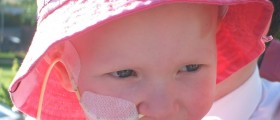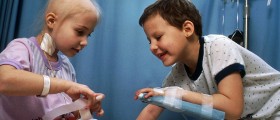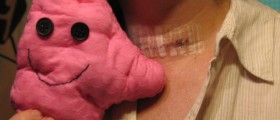
In for a lumpy ride
The occurrence of lumps, regardless of the part of the person’s body, is a reason enough to pay your doctor or physician an immediate visit, for one can never be sure of the possible underlying conditions that may be present and on the “loose”. Regarded as the most common areas in which lumps have the tendency to appear are the person’s neck (commonly mistaken for a swollen gland), the knee (commonly mistaken for a consequence of that tackle on the soccer match a few days ago), as well as in the area underneath the nipple (commonly mistaken for yet another symptom of puberty).
Even though this may sound quite unpleasant and troubling, the greatest majority of these unpleasant “neighbors next door” are neither serious in nature, no cancerous, which is the biggest concern of any parent when it comes to his/her beloved child. What further substantiates the aforementioned claim is that cancer is extremely rare at younger age. However, the frights and concerns of the parents are not to be all that easily dismissed. Though cancer in children is regarded to be quite a rare occurrence, it is still not impossible. Namely, when it comes to the members of the male population, all ages included, breast cancer accounts for little under 1% of all types of cancer. In this regard, the lump that has appeared all of a sudden might be the first sign of the cancer and therefore, it is quite important and even deemed essential, that the parents take their child as soon as possible for a quick check up at the doctor’s office.
When is the right time to be concerned?
When it comes to lumps as such, the first associations that parents have the tendency to get are that this is either an indicator of a tumor, or some downside of the puberty as such.
Puberty does bring a number of changes, particularly having reproductive system in mind. The changes in question are initiated and induced by surges of complex and most accurately balanced hormones. And all these changes can be put into five different categories, which are known under the name of Tanner stages, i.e. Sexual Maturity Rating stages. In relation to this, it is important to know that, when it comes to boys, lumps are most frequently encountered in the course of the stage 3 and stage 4.
Parents have a valid cause for concern once the lump in a boy's breast occurs prior to the age of 10, or after the age of 15, particularly if it is under the nipple but not directly under. Other signs for concern are if the lump feels as if fixed to the skin, if it is larger than 1.5 inches (i.e. 4cm), if it does not disappear even after 2 years, as well as nipples leak milk, blood, pus or any other kind of fluid.











-And-Children-16-Warning-Signs-And-Symptoms_f_280x120.jpg)





Your thoughts on this
Loading...